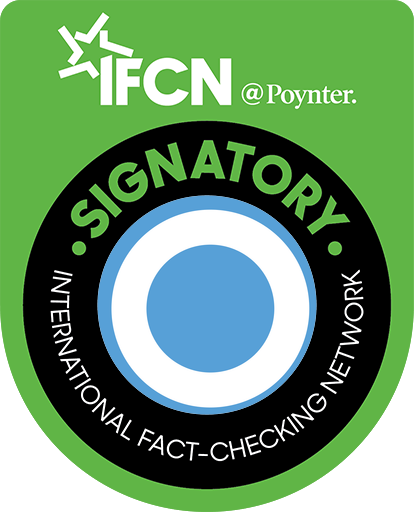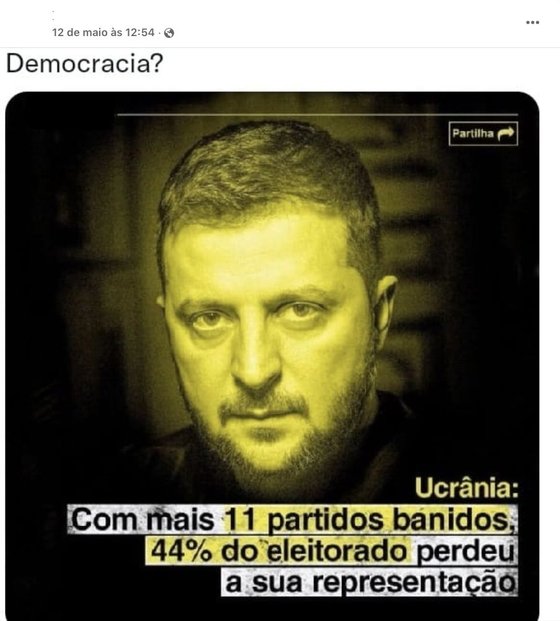In mid-March, news broke that the government headed by Volodymyr Zelensky had banned 11 Ukrainian parties, in the midst of a war against Vladimir Putin’s Russia. There was a lot of ink, both in the media and on social networks. Several weeks later, a post appeared on Facebook on May 12 guaranteeing that, due to this decision – to “ban 11 parties” – “44% of the electorate” is no longer represented in the Parliament of that country. It is, however, a fake post.
First of all, it should be noted that yes: in fact, Zelensky decided to suspend the activity of 11 political parties, as he revealed in one of his many videos. However, for all information to be correctly identified, it is important to identify which parties we are talking about: they are Opposition Platform — For Life, Sariy’s Party, Nashi, State, Volodymyr Saldo Block, Left Opposition, Union of Forces of Left. , Progressive Socialist Party of Ukraine, Socialist Party of Ukraine, Party of Socialists and Opposition Bloc.
According to the information available and already shared by other national and international newspapers, the largest of these parties, Platform of Opósito pela Vida, won 43 of the 450 seats in the Ukrainian parliament in the last elections. As for the others, they would have little or no representation, with some, in fact, very little in terms of electoral expression at the national level. Zelensky’s justification was as follows: the links between these parties and Russia did not allow them, under martial law, to continue their activity on Ukrainian soil. Confirmation of this decision was approved by the Ukrainian Parliament, by 330 votes in favor, on May 3, as confirmed by the Kyiv Post.
Now, while it is true that the accusation of the elimination of these parties is true, the same cannot be said for the alleged 44% of voters who were no longer represented in Ukraine because they saw the deputies they helped elect eliminated from the parliamentary scene. .
Only three of the 11 banned parties stood in the last legislative elections, which took place in 2019, just a few months after Volodymyr Zelensky won the Ukrainian presidency. They were the Opposition Party, already mentioned (reaching 13% of the votes), the Opposition Bloc, which obtained 3% of the votes —not being able to elect anyone at the national level, but at the regional level— and , finally, Shariy’s Party, which did not even manage to elect anyone. On various websites that followed these elections, some of these numbers are never mentioned, precisely because the parties in question were unable to elect.
After all, the sum of the parliamentary presence of these parties does not reach the 44% claimed in the original publication. There are 49 deputies for 450 seats, which represents around 10% of the parliamentary representation and thus of the most recent electoral representation in Ukraine.
conclusion
It is true that, by decision of President Volodymyr Zelenksy — and later by ratification of the Ukrainian parliament — this year the suspension of the activity of 11 political parties in Ukraine was approved. Still, looking at the original post, it is not true that these parties accounted for 44% of the Ukrainian electorate. This is because only three had a parliamentary seat since the last legislative elections, which took place in 2019, and because this representation did not exceed 10%.
Thus, according to the Observer classification, this content is:
WRONG
In the Facebook rating system, this content is:
FAKE: The main content claims are factually inaccurate. In general, this option matches “false” or “mostly false” ratings on fact-checking websites.
NOTE: This content was curated by The Observer as part of a fact-checking partnership with Facebook.

Source: Observadora
